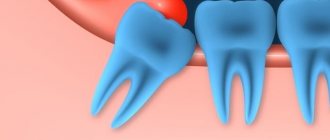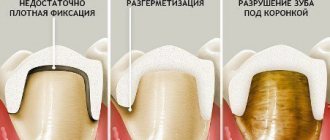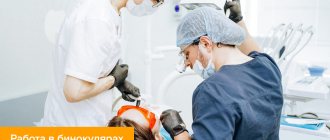One of the most common reasons for visiting pediatric otolaryngologists is inflammation of the tonsils in a child, otherwise known as tonsillitis. Inflammation affects the palates; tonsils are paired lymph glands, often called tonsils. The cause of inflammation of the tonsils in children can be either a viral or bacterial (streptococcal and staphylococcal) infection.
Pediatric ENT doctors at the Miracle Doctor clinic comprehensively assess the child’s condition and develop individual treatment regimens. Experience and the latest equipment allow them to provide high-quality diagnostics and treatment of ENT organs of patients of all ages.
Symptoms
Inflammation of the tonsils in the throat of a child is characterized by the appearance of the following clinical symptoms:
- discomfort in the throat: pain, soreness, rawness;
- increased body temperature (up to 37-38° C);
- appearance of cough;
- sensation of a lump or foreign body in the throat (due to plugs formed on the tonsils);
- general weakness and fatigue, headache;
- white plaque on the tonsils.
Depending on the type and stage of inflammation of the tonsils, the clinical picture may be supplemented by enlargement of the submandibular lymph nodes, redness and swelling of the palatine arches, and the appearance of purulent plugs on the tonsils with a specific unpleasant odor.
.
Prevention and treatment of tonsillitis in children
What are the difficulties in treating chronic tonsillitis? What procedures are included in the complex of preventive treatment?
In the structure of diseases of the ENT organs in children, a significant part is made up of infectious and inflammatory diseases of the palatine tonsils, which account for 20% of cases in the general population and up to 43% in the group of frequently ill children.
In the etiology of acute tonsillitis (angina), the main role is played by the following microorganisms: Hemophilus influenzae, Moraxella catharralis and beta-hemolytic streptococcus, the relevance of which in the development of the pathological process is still high.
Other microorganisms, such as viruses, streptococci of other groups, Neisseria, etc., are of significantly less importance.
Infection occurs by airborne droplets, the source is a sick person or, more importantly for children attending preschool institutions and schools, an asymptomatic carrier.
The clinical picture of acute tonsillitis, as a rule, is quite typical and does not cause diagnostic difficulties: there is an acute onset with a rise in body temperature from low-grade fever to severe hyperthermia, general weakness, headache, sore throat, aggravated by swallowing, enlargement and tenderness of the tonsillar lymph nodes.
During pharyngoscopy, the picture is also typical: hyperemic and edematous tonsils, soft palate, posterior wall of the pharynx, as well as lateral columns (in Western countries the diagnosis of tonsillopharyngitis is accepted; in the lacunae of the tonsils there are inflamed purulent follicles or widespread white-yellow overlays on the tonsils (but not extending beyond the tonsils, that is, not spreading to the arches and soft palate).The plaques are loose, easily removed from the surface of the tonsils. After removing the film, the tonsil does not bleed.
Diagnosis of catarrhal tonsillitis may present some difficulties when there is no plaque on the tonsils. But this is a somewhat special case: there is currently a discussion about the legitimacy of such a diagnosis, that is, the existence of catarrhal tonsillitis as such is being questioned. In these cases, it is proposed to make a diagnosis of acute respiratory disease.
A clinical blood test determines changes typical of the inflammatory process.
Ideally, before starting therapy, a microbiological examination of a smear from the tonsils is carried out to determine sensitivity to antibiotics.
Therapy for acute tonsillitis remains traditional: it is antibacterial therapy, and aminopenicillins with clavulanic acid (amoxiclav, augmentin) remain the drugs of choice. Synthetic penicillins retain their value only in the treatment of acute tonsillitis caused by beta-hemolytic streptococcus. Today, from the group of penicillins for oral administration, amoxicillin is the most important, surpassing other drugs in this group in its pharmacokinetic properties. Along with penicillins, cephalosporin antibiotics are used, with preference given to drugs of the first (cefadroxil) and second (cefuroxime, axetil, cefaclor) generations.
In case of intolerance to penicillins and cephalosporins, macrolides are used.
Along with systemic antibiotics, topical antiseptics are also used that have an anti-inflammatory and analgesic effect (hexasprey, hexoral, stopangin, tantum verde, etc.).
Irrational treatment of acute tonsillitis, in particular refusal of systemic antibiotic therapy or its unjustifiably shortened course, is one of the reasons for the chronicity of the process.
Treatment of chronic tonsillitis, both in the acute stage and in the remission stage, is associated with a number of difficulties. In particular, it is necessary to take into account that in a chronic process, as a rule, not an isolated flora is detected, but a mixed infection, which is much less amenable to antibacterial therapy. The most obvious way to treat chronic tonsillitis is surgery - bilateral tonsillectomy. In adult patients, this route is justified in any case. But as to whether tonsils should be removed in children, and if so, at what age, expert opinions differ. This is due to the fact that the lymphopharyngeal ring performs protective functions and is an immunocompetent organ. Therefore, a significant number of pediatricians believe that if chronic tonsillitis occurs in a compensated form, it is necessary to carry out conservative treatment.
The standard complex of preventive conservative treatment of chronic tonsillitis includes a set of procedures aimed at combating pathogenic microflora that is constantly located in the lacunae of the tonsils, improving the drainage of the tonsils, and correcting the body’s immunological defense. This complex includes washing the lacunae of the tonsils, lubricating the tonsils with antiseptic solutions, physiotherapeutic procedures (ultrasound in the submandibular area or laser therapy), and the use of immunomodulators. The course of treatment is carried out twice a year.
Our study was conducted to identify the most optimal scheme for the preventive treatment of chronic tonsillitis.
From April 2000 to June 2002, 68 children aged 7 to 12 years with a diagnosis of chronic tonsillitis, compensated form, were under our supervision. (Children under 7 years of age were excluded from the study, since contact with them was difficult and, therefore, there were limitations in carrying out the full course of complex therapy.) In 24 (35%) children, the disease occurred with exacerbations in the form of sore throats 1 time per year or 2 every three years, 6 of them had a history of peritonsillar abscesses. All parents categorically refused surgical intervention. The remaining 44 (65%) people had a compensated non-anginal form of chronic tonsillitis. (There was no documented diagnosis of tonsillitis in the medical history.)
All children complained of increased fatigue and periodic headaches. Parents paid attention to weakness, sweating, frequent colds, and a prolonged “unmotivated” increase in body temperature to subfebrile levels.
During examination, all children showed enlargement and hardening of the submandibular lymph nodes. Soreness was noted by 11 (16%) children included in the examination 7-10 days after suffering from tonsillitis.
All children had slight hyperemia of the mucous membrane of the tonsils and the posterior pharyngeal wall. The anterior arches were significantly hyperemic and injected with vessels. The tonsils are fused to the arches, with widened lacunae; there is pathological purulent discharge in the lacunae. 49 (72%) people had grade II tonsils and 19 (23%) people had grade III tonsils. 10 children had a purulent odor from their mouth.
All children under our supervision underwent a course of conservative treatment of chronic tonsillitis 2 times a year. Every other day, they washed the lacunae of the tonsils (from 8 to 10 procedures, depending on the effectiveness). In all cases, these procedures were combined with ultrasound examination of the submandibular area.
Washings were carried out with solutions of Hexoral (10 patients), Miramistin (20 patients), Octinosept (28 patients). These drugs were chosen due to the fact that they have a wide spectrum of antimicrobial and antifungal effects, are non-toxic, are not absorbed through intact mucous membranes, have a taste acceptable to children, and are available in the form of solutions.
After the treatment, a visual effect was noted after the 5th procedure: the tonsils shrank in size, acquired a pale pink color, the lacunae remained free, and the bad breath disappeared.
In addition to the direct impact on the tonsils with antiseptic solutions and the use of physiotherapy, we included in the complex of preventive procedures homeopathic remedies that have an anti-inflammatory effect, aimed at strengthening the lymphoid tissue. In particular, tonsilotren was used, a complex drug whose action is aimed at eliminating the symptoms of inflammation, reducing hypertrophy of the palatine and nasopharyngeal tonsils, as well as regional lymph nodes by improving the drainage of lymphoid tissue and the immunomodulatory effect.
The drug was prescribed as a tablet 3 times a day (at the same time a course of lavage of the tonsil lacunae and physiotherapy began) and was taken for a long time, for 6 weeks. The drug was well tolerated. In 4 (6%) children, tonsilotren had to be discontinued on the 4th day of treatment at the request of their parents due to a slight exacerbation of tonsillitis symptoms.
Control was carried out 3 months after the start of complex therapy. After the first course of preventive treatment, out of 64 children taking tonsilotren, 53 (83%) people did not have any complaints related to diseases of the ENT organs for 3 months. The pharyngoscopy picture remained satisfactory. 9 (14%) people suffered mild ARVI, 2 (3%) patients had ARVI with high fever and sore throat.
After 6 months (from the start of the first course), 64 people underwent preventive treatment again in full, excluding 4 children who did not take the homeopathic drug. During a follow-up examination carried out 6 months later (before the next course of preventive treatment), a satisfactory pharyngoscopy picture was noted, no pathological changes were observed in clinical blood and urine tests, and the ECG was within the age norm. During the reporting period, 59 (92%) people had virtually no complaints. 2 (3%) children suffered from ARVI, 1 child had bronchitis, 2 (3%) people suffered from follicular tonsillitis. In 1 child, tonsillitis was complicated by a peritonsillar abscess. The parents refused the operation.
During the observation period, the children received 5 courses of preventive treatment for chronic tonsillitis. During this time, the number of children suffering from acute respiratory viral infections and other respiratory infections sharply decreased. In 62 (97%) people, sore throats did not recur. The pharyngoscopy picture remained satisfactory.
In 2 children, bilateral tonsillectomy was performed due to the ineffectiveness of conservative treatment.
Thus, complex preventive treatment of chronic tonsillitis with the inclusion of antiseptic solutions and homeopathic drugs (tonsilotren) in the therapeutic regimen is highly effective and allows children to preserve the tonsils as a necessary immunocompetent organ and avoid traumatic surgery.
Literature
- Belov B.S. A-streptococcal tonsillitis: clinical significance, issues of antibacterial therapy // Attending Physician. 2002. No. 1-2. pp. 24-28.
- Karaulov A.V., Sokurenko S.I., Barmotin G.V. Principles of immunoprophylaxis and immunotherapy of recurrent respiratory diseases // MMA im. I. M. Sechenov, clinic of the Ministry of Foreign Affairs of the Russian Federation. M., 1999.
- Lazarev V.N. Adaptation reactions and their correction in chronic inflammatory diseases of the upper respiratory tract: Abstract of thesis. dis. ... doc. honey. Sci. M., 1995.
- Lopatin A. S. Treatment of acute and chronic pharyngitis // RMZh. 2001. T. 9. No. 16-17.
- Dagnelie CF Sore Throat in General Practice. A Diagnostic and Therapeutic Study. Thesis. Rotterdam, 1994.
- Rice D. H. Microbiology. In: Donald PJ, Gluckman JL, Rice DH Editors. The Sinuses. New York: Raven Press. 1995. pp. 57-64.
At the beginning of an exacerbation of chronic tonsillitis or in the postoperative period (after tonsillectomy), it makes sense to use topical antiseptics to accelerate the relief of inflammatory and pain symptoms in the oral cavity. In particular, the drug faringosept, which has a pronounced antiseptic effect and is available in the form of lozenges, has proven itself well. This ensures convenience and painlessness of its use, which is especially important in the postoperative period.
Complications
If inflammation of the tonsils becomes chronic, then exacerbations of the disease occur; 6-7 times a year. The presence of frequent exacerbations indicates a weakened immune response of the child’s body to the presence of infection in the tonsils. Inflammation of the tonsils often leads to the development of complications in the ears, lungs and other organs of the child. In the case of chronic inflammation, the tissue of the tonsils becomes scarred, lacunar plugs appear, and the lacunae themselves become foci for the spread of staphylococcal and streptococcal infections.
.
What tests need to be taken for tonsillitis?
In order to determine the pathogen and determine further treatment, the doctor may prescribe a number of laboratory tests to the patient, for example:
- a smear from the tonsils, arches and back of the throat to identify bacteria and their resistance to various groups of antibiotics, but such a study may take several days
- rapid test for the detection of group A beta-hemolytic streptococcus to determine streptococcal tonsillitis5
- a general blood test with a leukocyte formula, which pays attention to elements that reflect inflammation and the immune response to the disease. Increased band neutrophils, leukocytes, increased ESR, decreased lymphocytes
- CRP (C-reactive protein - a marker of inflammation) is the most sensitive protein responsible for inflammation in the body
Treatment
Treatment of inflammation of the tonsils can be either conservative or surgical. Conservative therapy for inflammation of the tonsils includes:
- physiotherapeutic treatment
- prescribing a course of systemic antibiotics;
- symptomatic treatment;
- immunomodulatory and restorative drugs;
- treatment using the Tonsillor device.
- In case of ineffectiveness of conservative treatment and the development of serious complications, a decision is made on surgical intervention. Removal of tonsils for chronic tonsillitis is called tonsillectomy or tonsillotomy.
What to do in case of tonsil blockages?
Of course, see an otolaryngologist in a specialized ENT office; in Moscow, this can be done at ENT Clinic No. 1 , where you will receive treatment, including sanitation of the tonsils ( washing the tonsil plugs ). Of great importance in treatment is the availability of this organ for washing with medicines, both manually (special instruments) and physiotherapy.
The tonsil tissue is very well healed when treated with the “Tonsillor” apparatus, when ultrasonic washing of the tonsils occurs, followed by phonophoresis of a medicinal substance into the tonsil tissue. When treated with tonsillitis, the tonsils are both cleansed and significantly reduced in diameter, inflammation is relieved, and pathogenic microflora is destroyed. In addition to this technique, the non-contact method of treating tonsils is widely used: USOL therapy, endolacunar laser therapy, and photochromotherapy.
ENT specialists - doctors of ENT clinic number 1 will individually select a treatment method and take you for follow-up at the dispensary. The course of treatment is usually 8-10 procedures. Since the process of inflammation in the tonsils in this case is chronic, it is advisable to repeat the course of treatment every six months, which will help you maintain the protective function of the tonsils, significantly improve the quality of life (reduce morbidity), and prevent the development of serious complications.
It should be noted that with regular treatment for 2-3 years, some patients may experience complete recovery and restoration of tonsil function, which does not require further courses of anti-relapse therapy.
Advantages of visiting the Miracle Doctor clinic
When prescribing surgical intervention, along with traditional surgical methods for removing tonsils in children, the Miracle Doctor clinic performs tonsil removal under anesthesia using the cold plasma coblation method, in which a special device with an electrode is used instead of a scalpel. Removing tonsils with a coblator avoids damage to surrounding tissues; the operation is quick and almost bloodless.
Regardless of whether general or local anesthesia is used, highly effective and safe drugs of the latest generation are used. To ensure comfort during the postoperative period, the patient is provided with a separate room in a 24-hour hospital. Pediatric otolaryngologist surgeons at the Miracle Doctor clinic can not only slow down inflammation of the palatine tonsils, but also, in advanced cases, perform surgery using progressive minimally invasive methods.
Causes and mechanism of dry cough in a child
Coughing is a protective mechanism during which foreign bodies, mucus, and waste products of viruses and microbes are removed from the respiratory tract. It occurs when chemical or physical irritation of special sensitive receptors, which are responsible for a timely response to foreign bodies entering the respiratory tract. Nerve impulses are transmitted to certain structures of the brain, and then to the cough center. As a result, a cough occurs, which can be dry or wet. A dry cough greatly exhausts the child, deprives him of strength, and interferes with sleep. Children refuse to eat, cry for a long time, and with a protracted course of the disease, which lasts weeks and months, diaphragmatic and inguinal hernias may even form due to increased intrathoracic pressure and strong tension in the abdominal wall.
The main causes of dry cough in children:
- irritation of the respiratory tract of an infectious, allergic nature, due to the ingress of foreign bodies or exposure to aggressive chemical components;
- severe squeezing of the throat;
- irritation of receptors in the mediastinal area;
- left ventricular heart failure;
- bronchial asthma, chronic bronchitis;
- taking certain medications;
- inflammation of the esophageal mucosa.
Only a qualified specialist can know how to treat a dry cough in a child and what to do to combat the underlying disease, as well as to prevent the development of complications. Do not delay treatment, especially if the child’s dry cough does not go away, has a paroxysmal or “barking” character, is accompanied by wheezing, deterioration of health and severe weakness. A long-term cough in children reduces the quality of life of both the baby himself and his parents, who do not they know what to give the child to make him feel better. Experimenting with medications in childhood is extremely dangerous - do not self-medicate, seek help from a qualified doctor.










